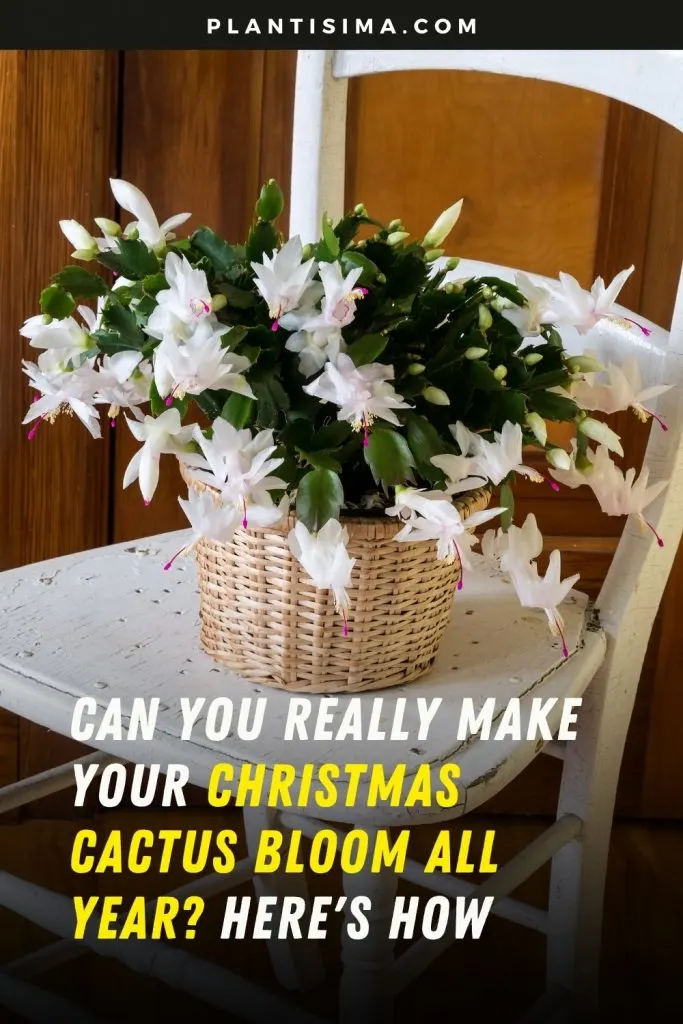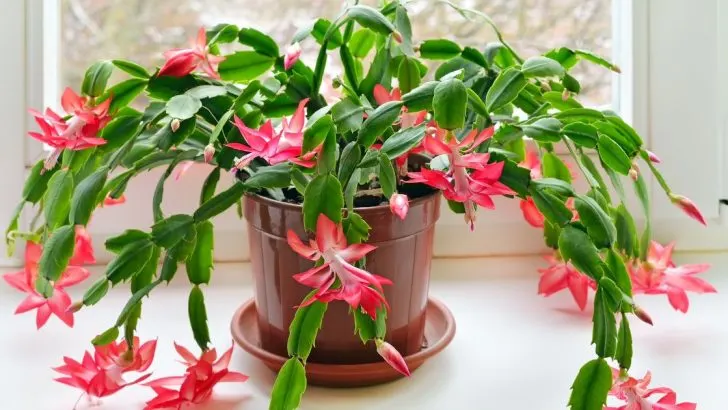As the holiday season approaches, our homes become filled with festive decorations, twinkling lights, and the delightful aromas of traditional treats.
Among this cheerful ambiance, the Christmas cactus stands as a living testament to the spirit of the season. With its vibrant, velvety blooms in shades of red, pink, white, and even purple, this tropical wonder adds a magical touch to any indoor garden.
The Christmas cactus, belonging to the Schlumbergera genus, has a fascinating history and captivating beauty that have made it a beloved houseplant worldwide.
Beyond its striking appearance, the Christmas cactus has become a symbol of resilience, thriving and blooming during the colder months when most other plants are resting.
In this comprehensive guide, we’ll take you on a journey to discover the secrets of cultivating a Christmas cactus that blooms endlessly, bringing a spectacular display of color to your home all year round.
We’ll cover the basics of Christmas cactus care and reveal some lesser-known tips to keep those blooms coming.
Part I: Christmas Cactus Care Basics
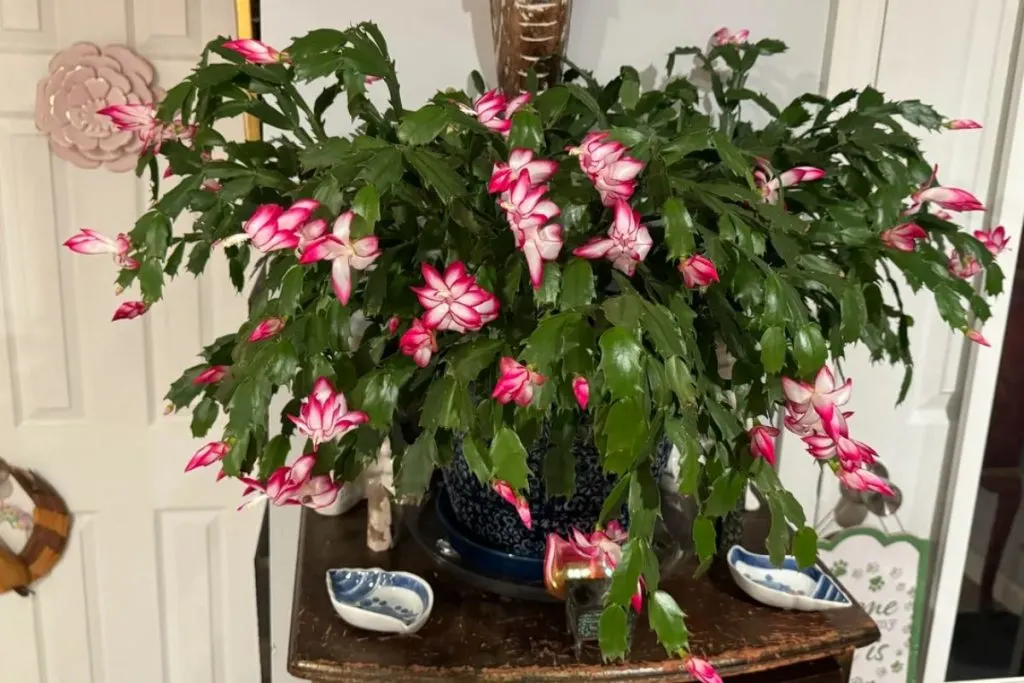
Choose the Right Location
The right location is crucial for the health and blooming potential of your Christmas cactus. Place the plant near a window where it receives bright, indirect light.
Avoid direct sunlight, as it can scorch the leaves. Additionally, ensure the plant is shielded from cold drafts and extreme temperature fluctuations.
Provide Adequate Light
While Christmas cacti thrive in bright light, too much exposure can be harmful. During the blooming period, expose your cactus to about 12-14 hours of bright light daily, but reduce this to 8-10 hours for the rest of the year. This light adjustment encourages the plant to bloom during the holiday season.
Maintain the Right Temperature
Christmas cacti prefer temperatures between 60°F and 70°F (15°C to 24°C). Extreme temperature changes can cause the buds to drop and hinder blooming.
Keep your plant away from heat sources like radiators or air vents, which can stress the plant and interfere with flowering.
Water Wisely
Overwatering can lead to root rot, while underwatering can cause bud drop. Strike the right balance by letting the top inch of soil dry out before watering again.
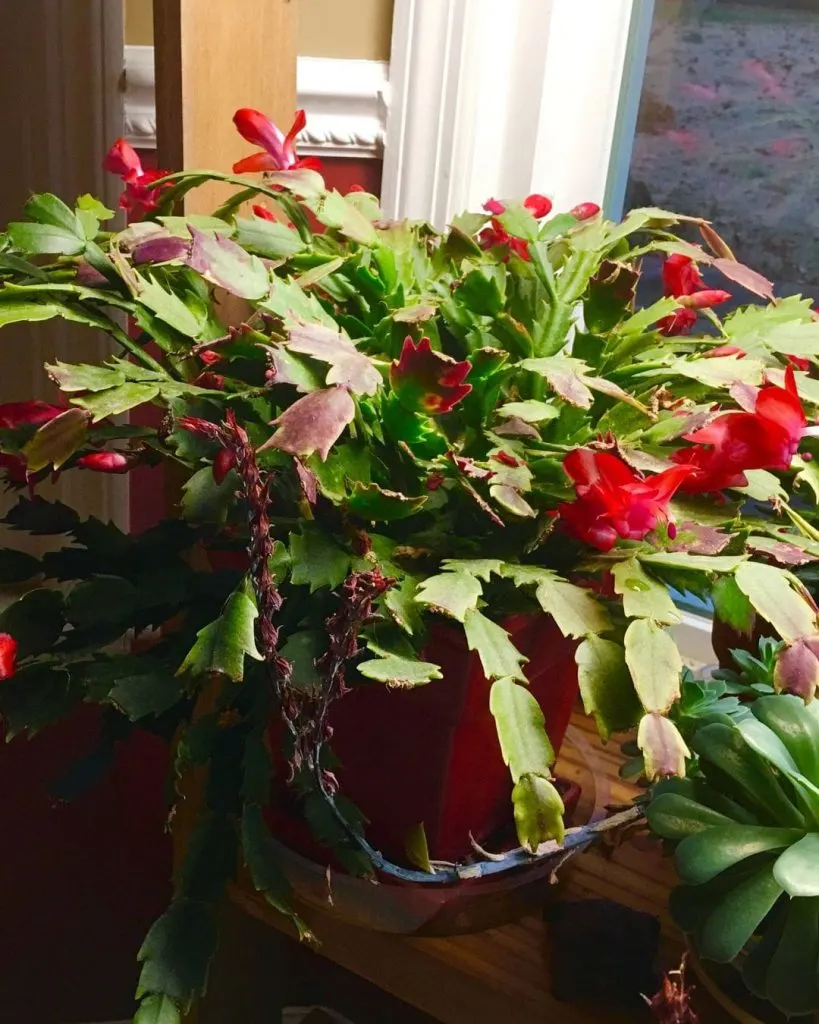
Keep the soil slightly moist during the blooming period, but avoid soggy conditions. Reduce watering after the flowering season.
Humidity is Key
Christmas cacti thrive in moderate to high humidity. To increase humidity around your plant, place a tray of water with pebbles nearby or use a humidifier. This helps prevent bud drop and encourages healthy blooms.
Fertilize Smartly
Feed your Christmas cactus with a balanced, water-soluble fertilizer every two weeks during the growing season (spring and summer). This ensures your plant gets the nutrients it needs to keep blooming. However, stop fertilizing during the blooming season.
Prune for Shape
After the blooming season, give your Christmas cactus a light trim to encourage branching and make the plant bushier and healthier. Snip a few segments from the stem tips to promote new growth. This also creates more places for blooms to emerge.
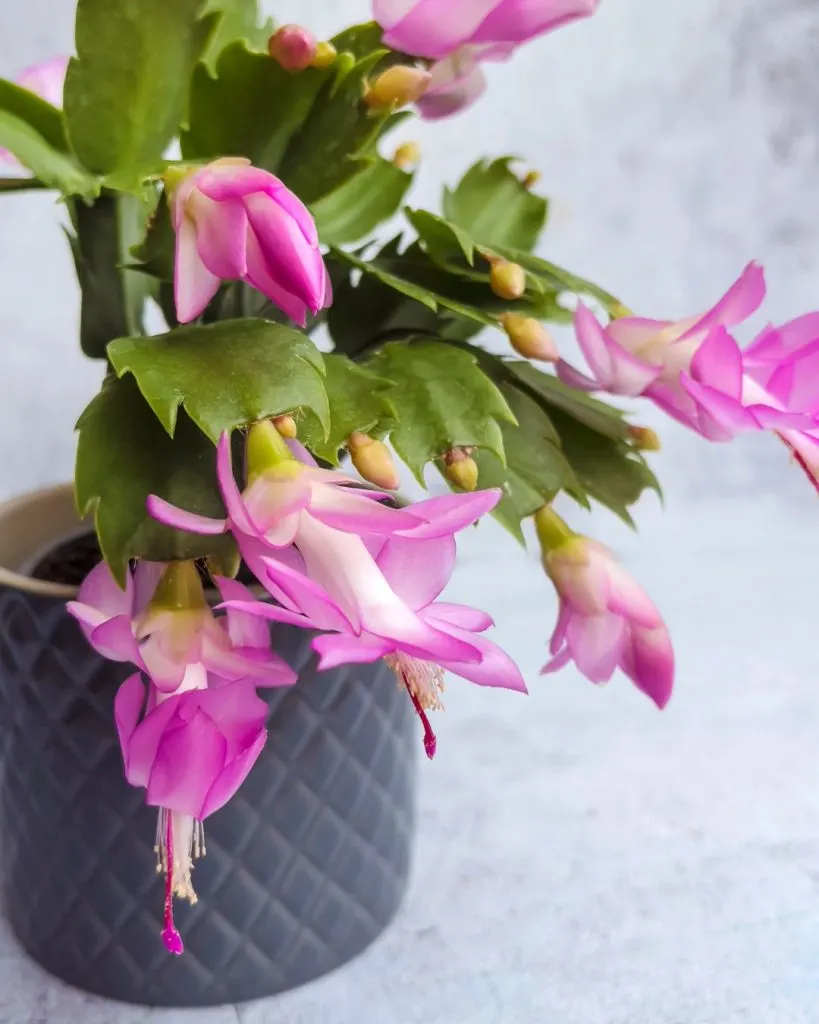
Watch the Light Exposure
To trigger bud formation, the Christmas cactus needs extended periods of uninterrupted darkness, known as photoperiods. In the fall, expose your cactus to 12-14 hours of darkness each night for 6-8 weeks to stimulate blooming just in time for the holidays.
Propagate with Care
Want more Christmas cacti to increase your chances of endless blooms? Propagate your plant in the spring or early summer. Use healthy stem cuttings and let them callous over for a few hours before planting in well-draining soil. Water sparingly until roots form.
Keep an Eye on Pests and Diseases
Check your Christmas cactus regularly for pests like spider mites and mealybugs. Treat any infestations with insecticidal soap or neem oil. Also, ensure good air circulation and avoid overcrowding, which can make the plant susceptible to fungal diseases.
Part II: Lesser-Known Care Tips
While many people are familiar with the basics of Christmas cactus care, there are a few lesser-known tips that can make a significant difference in the health and bloom potential of your plant.
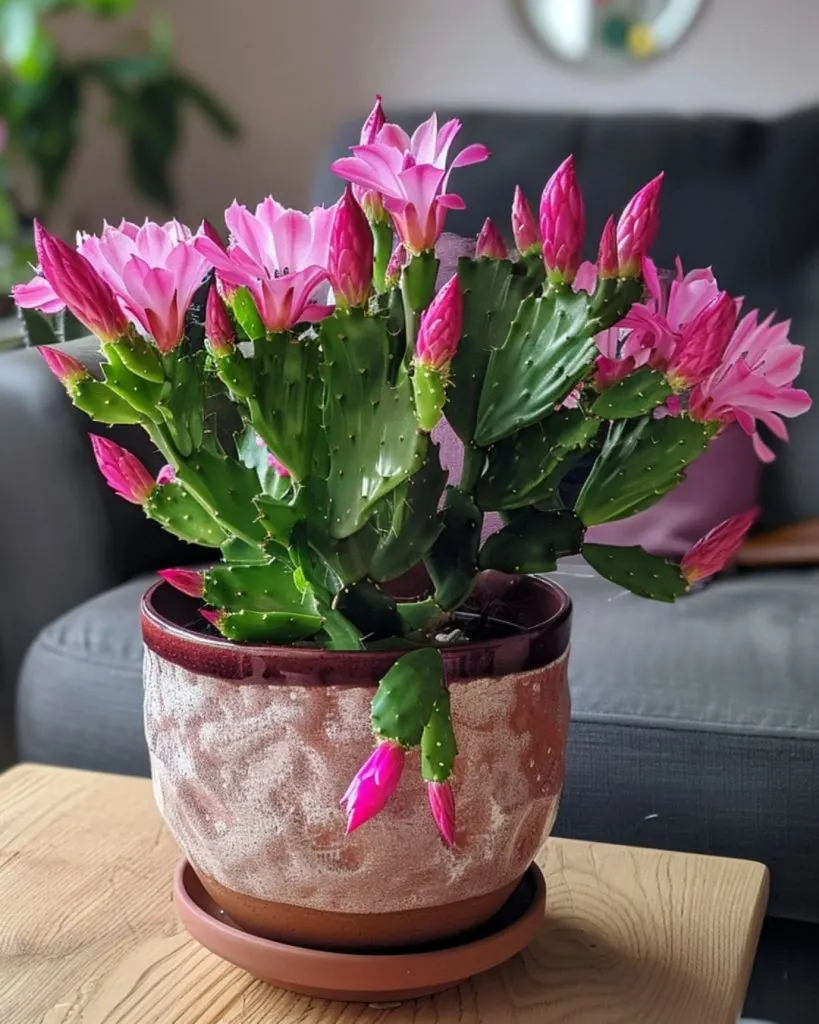
These often-overlooked care tips can take your Christmas cactus game to the next level, ensuring it thrives and produces abundant blooms:
Use Rainwater or Distilled Water
Tap water often contains minerals and chemicals that can accumulate in the soil over time, leading to salt buildup. To avoid this, water your Christmas cactus with rainwater or distilled water.
These cleaner water sources reduce the risk of mineral deposits and ensure your plant gets balanced hydration.
Why it matters: Using rainwater or distilled water prevents harmful mineral buildup in the soil, which can cause nutrient imbalances and negatively impact the plant’s health and bloom potential.
Repot with Fresh Soil Every Few Years
Over time, the soil for Christmas cacti can break down and compact, affecting drainage and nutrient absorption. To maintain a healthy root system, repot your Christmas cactus every 2-3 years using fresh, well-draining cactus or orchid soil.
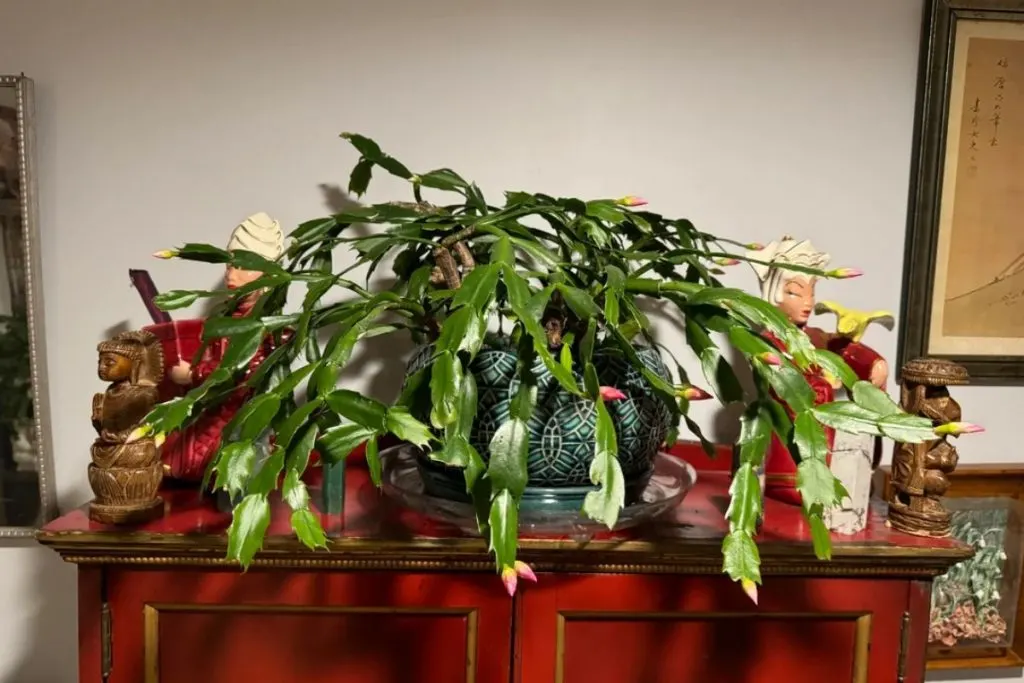
Why it matters: Repotting with fresh soil promotes healthier roots, better nutrient availability, and improved drainage, providing an optimal environment for your Christmas cactus to thrive and bloom abundantly.
Give Your Plant a Rest Period
Like many other plants, Christmas cacti benefit from a short rest period after their blooming season. During this time, reduce watering and move the plant to a slightly cooler spot (about 50°F to 55°F or 10°C to 13°C) for about 4-6 weeks.
Why it matters: The rest period mimics the plant’s natural environment, allowing it to recover, build up energy reserves, and form buds for the next bloom cycle. This practice leads to a healthier and more vibrant bloom display for the next holiday season.
Encourage Pollination
To boost natural pollination and increase your chances of fruit set, you can hand-pollinate your Christmas cactus. Use a small, soft brush to gently transfer pollen from one bloom to another, mimicking the role of insects.
Why it matters: Hand-pollination increases the likelihood of successful fruit development, signaling the plant to produce even more blooms in the future, leading to an extended flowering season.
Avoid Over-Fertilizing
While fertilizing is crucial for growth, it’s important not to overdo it. Over-fertilization can lead to salt buildup in the soil and cause nutrient imbalances, negatively impacting the plant’s health.
Why it matters: Proper fertilization ensures an optimal nutrient balance without causing toxicity issues. Use a balanced, diluted fertilizer during the growing season, and skip fertilizing during the blooming period to encourage lush blooms.
Blooming Beauty Year-Round
With these expert tips and lesser-known tricks, you can transform your Christmas cactus into a blooming showstopper that dazzles during the holiday season and beyond.
By mastering the basics and applying these advanced care techniques, you’ll ensure your Christmas cactus not only survives but thrives, rewarding you with endless vibrant blooms for years to come.
So go ahead, give your Christmas cactus the love and care it deserves, and watch it become the star of your indoor garden!
